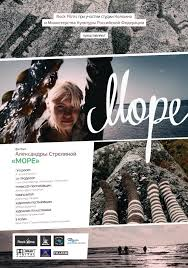La Jaula de oro.
A quoi sert une frontière aujourd'hui ?
A marquer encore plus les différences entre classes sociales si l'on en croit Rêves d'or, l'impressionnant premier film de Diego Quemada-Diez.
Quatre mômes guatémaltèques décident d'aller voir si la vie est meilleure du côté de l'Oncle Sam.
La feuille de route est simple : direction plein Nord à travers le Mexique, jusqu'au Rio Grande. Les multiples embûches vont la compliquer.
Rêves d'or renouvelle le principe du road-movie en le faisant virer à une grande aventure, celle de la vie de ces gamins.
Ils ne cessent d'avancer, coûte que coûte, quel que soit le prix à payer, la perte de l'innocence ou la vie.
Quatre destins qui en reflètent beaucoup plus si on en croit l'incroyable liste de noms de personnes remerciées au générique. Ceux des six cents migrants que Quemada-Diez a rencontrés pour documenter son film. Autant d'histoires condensées dans le périple de Juan, Sara, Samuel et Chauk, ces damnés de la Terre contemporaine, en perpétuel mouvement.
Quemada-Diez a pas mal bourlingué dans le cinéma, opérateur caméra pour Oliver Stone, Spike Lee, Alejandro Gonzalez Inarritu, Tony Scott ou Fernando Meirelles. Le genre de CV qui ouvre les portes d'Hollywood pour aller torcher du blockbuster à la pelle.
Quemada-Diez a préféré creuser un autre sillon, pas loin de celui d'un Ken Loach, dont il a été l'assistant à la fin des années 90 : un regard cruel sur le système mais bienveillant sur ses personnages.
C'est à Cannes au printemps dernier qu'on a découvert Rêves d'or. Un festival qui avait décidé de prendre la parole à propos de l'immigration, sujet de plusieurs films présentés sur la Croisette, de L'escale (des migrants iraniens coincés en Grèce) à The immigrant (Marion Cotillard en polonaise débarquant à Ellis Island dans les années dans les années 20). Soit le sujet de Rêves d'or : comment les cendres du colonialisme et son mépris pour les pauvres de tous pays sont restées des braises chaudes attisées par la mondialisation.
Si le film de Quemada-Diez se déroule au Mexique (alors qu'il pourrait parfaitement délocaliser son histoire en Afrique ou en Europe de l'Est), c'est sans doute pour symboliser que la géo-politique moderne à fait glisser les frontières, pour passer des rapports Est-Ouest pendant la guerre froide à ceux Nord-Sud, à l'ère de la guerre économique. Et peut-être aussi un peu pour rappeler que le monde est revenu à une brutalité primitive, la même que celles des Westerns.
Rêves d'or confirme cette progression tragique jusque dans ses décors, jungle verte dans les séquences d'ouverture qui s'assèche, devient de plus en plus un desert.
Rêves d'or en reprend d'ailleurs certaines bases : ces quatre mômes sont bel et bien les Indiens d'aujourd'hui, massacrés par les nouveaux cow-boys.
Il y a même un train, cheval de fer prenant à son bord, les migrants pour les amener un peu plus près de la frontière. Sauf que Quemada-Diez affirme qu'il fait aujourd'hui un parcours inverse : à l'époque de la conquête de l'Ouest, le train était censé amener la civilisation dans des terres sauvages. Aujourd'hui, il est comme renvoyé à l'expéditeur, chargé jusqu'à la gueule de ceux qui espèrent trouver leur part du gâteau aux USA.
Sans savoir qu'une fois là-bas, ils deviendront avant tout une marchandise, une main d'oeuvre, des morceaux de viande sans aucune plus valeur...













